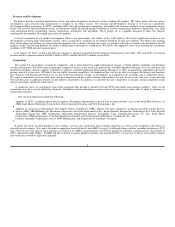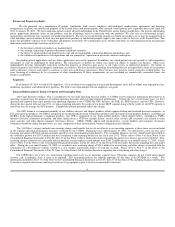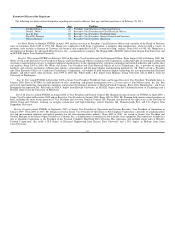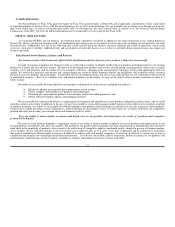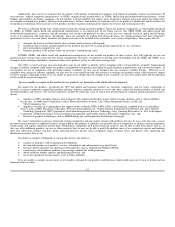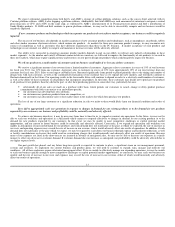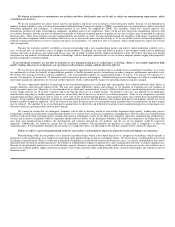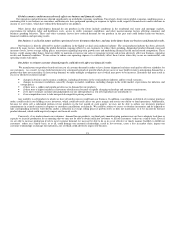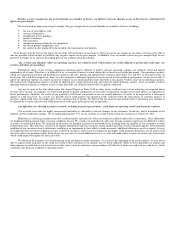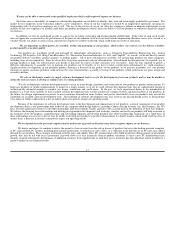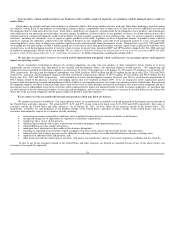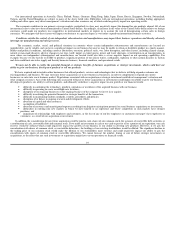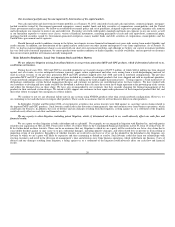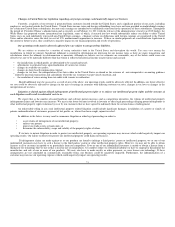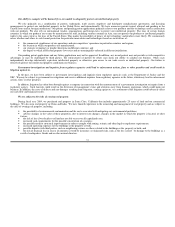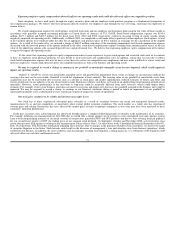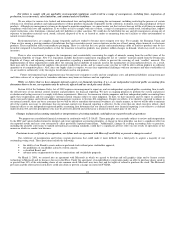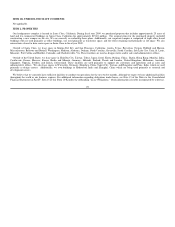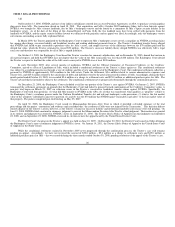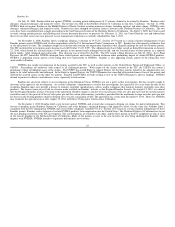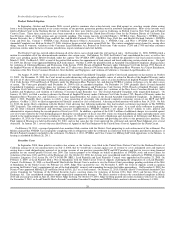NVIDIA 2011 Annual Report Download - page 20
Download and view the complete annual report
Please find page 20 of the 2011 NVIDIA annual report below. You can navigate through the pages in the report by either clicking on the pages listed below, or by using the keyword search tool below to find specific information within the annual report.
If our products contain significant defects our financial results could be negatively impacted, our reputation could be damaged and we could lose
market share.
Our products are complex and may contain defects or experience failures due to any number of issues in design, fabrication, packaging, materials and/or
use within a system. If any of our products or technologies contains a defect, compatibility issue or other error, we may have to invest additional research and
development efforts to find and correct the issue. Such efforts could divert our engineers’ attention from the development of new products and technologies
and could increase our operating costs and reduce our gross margin. In addition, an error or defect in new products or releases or related software drivers after
commencement of commercial shipments could result in failure to achieve market acceptance or loss of design wins. Also, we may be required to reimburse
customers, including our customers’ costs to repair or replace products in the field. A product recall or a significant number of product returns could be
expensive, damage our reputation, could result in the shifting of business to our competitors and could result in litigation against us. Costs associated with
correcting defects, errors, bugs or other issues could be significant and could materially harm our financial results. During fiscal years 2011, 2010 and 2009,
we recorded net warranty charges of $466.4 million against cost of revenue to cover anticipated customer warranty, repair, return, replacement and other costs
arising from a weak die/packaging material set used in certain versions of our previous generation MCP and GPU products shipped after July 2008 and used
in notebook configurations. Please see the risk entitled “We are subject to litigation arising from alleged defects in our previous generation MCP and GPU
products, which if determined adversely to us, could harm our business” for further information regarding this product defect.
We may have to invest more resources in research and development than anticipated, which could increase our operating expenses and negatively
impact our operating results.
If new competitors, technological advances by existing competitors, our entry into new markets, or other competitive factors require us to invest
significantly greater resources than anticipated in our research and development efforts, our operating expenses would increase. Our engineering and
technical resources included 4,161full-time employees as of January 30, 2011, 3,940 employees as of January 31, 2010 and 3,772 employees as of January 25,
2009, respectively. Research and development expenditures were $848.8 million, $908.9 million and $855.9 million for the fiscal years 2011, 2010 and 2009,
respectively. Research and development expenses included stock-based compensation expense of $57.9 million, $151.8 million and $98.0 million for the
fiscal years 2011, 2010 and 2009, respectively. Also included in research and development expense for fiscal year 2010 is stock-based compensation of
$90.5 million related to the purchase of certain outstanding options that were tendered in March 2009. If we are required to invest significantly greater
resources than anticipated in research and development efforts without a corresponding increase in revenue, our operating results could decline. Research and
development expenses are likely to fluctuate from time to time to the extent we make periodic incremental investments in research and development and these
investments may be independent of our level of revenue which could negatively impact our financial results. In order to remain competitive, we anticipate that
we will continue to devote substantial resources to research and development, and we expect these expenses to increase in absolute dollars in the foreseeable
future due to the increased complexity and the greater number of products under development.
We are subject to risks associated with international operations which may harm our business.
We conduct our business worldwide. Our semiconductor wafers are manufactured, assembled, tested and packaged by third-parties located outside of
the United States and other Americas. We generated 83%, 84% and 87% of our revenue for fiscal years 2011, 2010 and 2009, respectively, from sales to
customers outside the United States and other Americas. As of January 30, 2011, we have offices in 16 countries outside of the United States. The
manufacture, assembly, test and packaging of our products outside of the United States, operation of offices outside of the United States, and sales to
customers internationally subjects us to a number of risks, including:
• international economic and political conditions, such as political tensions between countries in which we do business;
• unexpected changes in, or impositions of, legislative or regulatory requirements;
• complying with a variety of foreign laws;
• differing legal standards with respect to protection of intellectual property and employment practices;
• cultural differences in the conduct of business;
• inadequate local infrastructure that could result in business disruptions;
• exporting or importing issues related to export or import restrictions, tariffs, quotas and other trade barriers and restrictions;
• financial risks such as longer payment cycles, difficulty in collecting accounts receivable and fluctuations in currency exchange rates;
• imposition of additional taxes and penalties; and
• other factors beyond our control such as terrorism, civil unrest, war and diseases such as severe acute respiratory syndrome and the Avian flu.
If sales to any of our customers outside of the United States and other Americas are delayed or cancelled because of any of the above factors, our
revenue may be negatively impacted.
18


